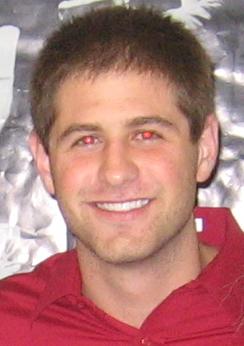|
|
Education & Outreach
2008 REU and a summer student @ LNGS, Italy

|
|
In the summer
of 2008 three undergraduate students, Gina Buffaloe
(St.Mary's
University),
Andrew R. Massari
(University of
Norte Dame),
and Jason Brodsky
(Harvard University), joined the XENON collaboration and worked
for various topics during the 2008 summer.
Gina and Andrew were part of the
Summer Research Program for
Undergraduates at
the Nevis
Labs and Jason was a undergraduate
student continuing his research with XENON
last year.
But since XENON100 was commissioning at LNGS
in Italy, all of the summer undergraduate students
did their researches at LNGS. Each of them had
small projects contributed to XENON project.
|
 |
Gina worked on analyzing data from the
Germanium detector this summer. Her aim was
to measure the radioactivity contribution
from selected PMT Bases. To have a clear idea
of the exact radioactivities of the various detector materials is
quite important to obtain accurate
background level, as in all rare searches, in
the direct detection of dark matter
background plays a key role and largely
determines the sensitivity of the experiment.
At the respective
links, one may find
Gina's
presentation
and
paper on her summer research.
|
 |
Andrew
approached the Xenon project with PMT Gain
Calibration. Precise and recurring
calibration of the over 200
Photo-Multiplier Tubes is necessary to
ensure accurate background rejection
capabilities. He studied both initial calibration in
a blackbox as well as regular maintenance
calibration.
At the
respective links one may find
Andrew's
paper
on his PMT Gain Calibration.
|
 |
Jason worked on the XENON project's new
testing detector, XeBella. XeBella
contains all the dual-phase detector
technology of Xenon100 in a smaller
package, making it easy to use for
calibration and testing. He learned and
used the GEANT4 simulation package to code
a simulated copy of XeBella, allowing us to
determine how the many components of the
real detector will affect our
testing. Jason also got hands on with the
detector, learning how all the apparatus
fits together and building the stand seen
in the photo to fit our needs. After
helping with the assembly of the detector,
he assisted with early tests of the cooling
system. Working with a detector in its
early stages was a great way to learn how
physicists combine the goals of an
experiment with its practical requirements
to turn their ideas into functioning experiments.
|
|